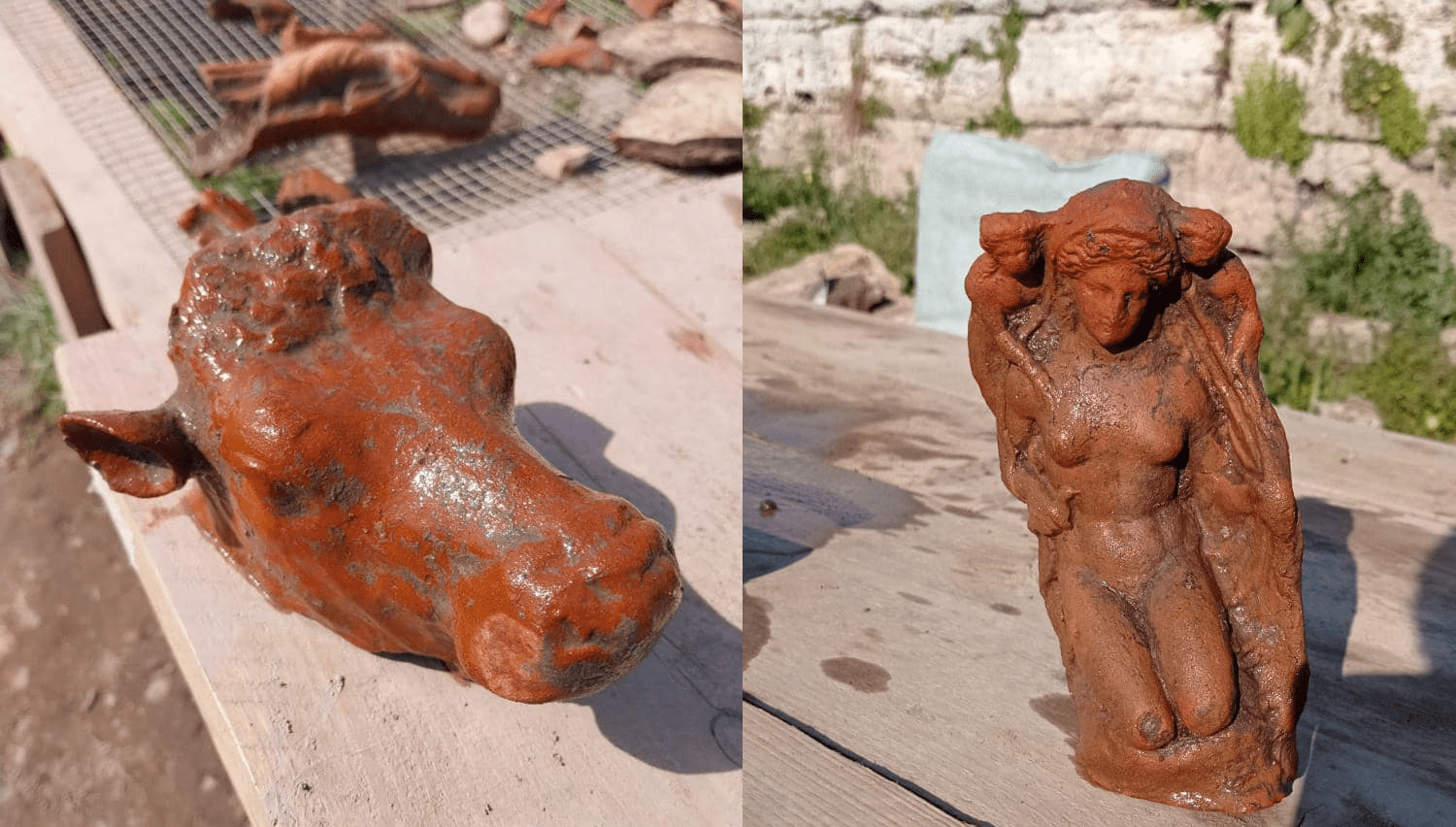A collection of artifacts oozing with color, culture, and sexuality has been discovered among the ruins of an ancient city found along Italy’s Almarli coast. Chief among those finds is a vibrant red figurine that depicts Eros, the Greek god of love and sex, riding a dolphin.
The relics were unearthed at the site of the ancient city of Paestum in the Italian province of Salerno which was founded by Greek colonists in 600 BCE. The settlement is often called Poseidonia, named after the ancient Greek god of the sea.
In a recent announcement, Italy’s culture ministry showed off the new discoveries at the archaeological site, noting how the array of beautiful objects shine “a very interesting light on ancient religious life” in the city.
Along with the Eros figurine, they found a similar mini-statue of Aphrodite, the goddess of love and lust.
A bulls head and a mini-statue of Aphrodite. Image credit: Archaeological Park of Paestum and Velia
Archaeologists also found a Roman coin from the 3rd century BCE which depicted Eros riding the dolphin on one side and Poseidon on the other. On top of that, they identified “hundreds of votive offerings,” including seven terracotta bull heads that were likely placed around an altar of a temple.
Lastly, their work revealed evidence of an altar that featured grooved stone, perhaps as a means to collect the dripping blood of the sacrifice.
Founded by the Greeks of Sybaris in 600 BCE, the city was later conquered by Lucanians from southern Italy and eventually became a colony of the Roman Republic around 273 BCE.
The city is known for its three ancient Greek temples in the Doric order, the same style as the Parthenon in Athens. This trio includes a temple of Hera, built between 560 and 520 BCE, a temple to Athena, which dates back to 500 BCE, and another smaller temple dedicated to Neptune, completed in 460 BCE.
The Temple to Neptune is known as a “tempietto,” or “little temple” as it measures just 15.6 by 7.5 meters (51 by 24 feet) with four columns at the front and seven on the sides.
Archaeologists on the project working at the “tiny temple.” Image credit: Archaeological Park of Paestum and Velia
The recent excavations started in 2020 but were almost immediately halted due to the COVID-19 pandemic. The dig resumed just a few months ago and has already brought up some extraordinary snippets of past.
“There’s a surprise every day,” Tiziana D’Angelo, the Director of the Paestum archaeological site, said in a statement.
D’Angelo continued to explain how the recent archaeological work was set to “change the recorded history of ancient Poseidonia.”
“The discovery of hundreds of statues and altars in the small temple of Paestum confirms the extraordinary value of this site,” added Gennaro Sangiuliano, the Italian Minister of Culture.
Source Link: Sex God Riding A Dolphin And Other Finds Unearthed At Ancient City
